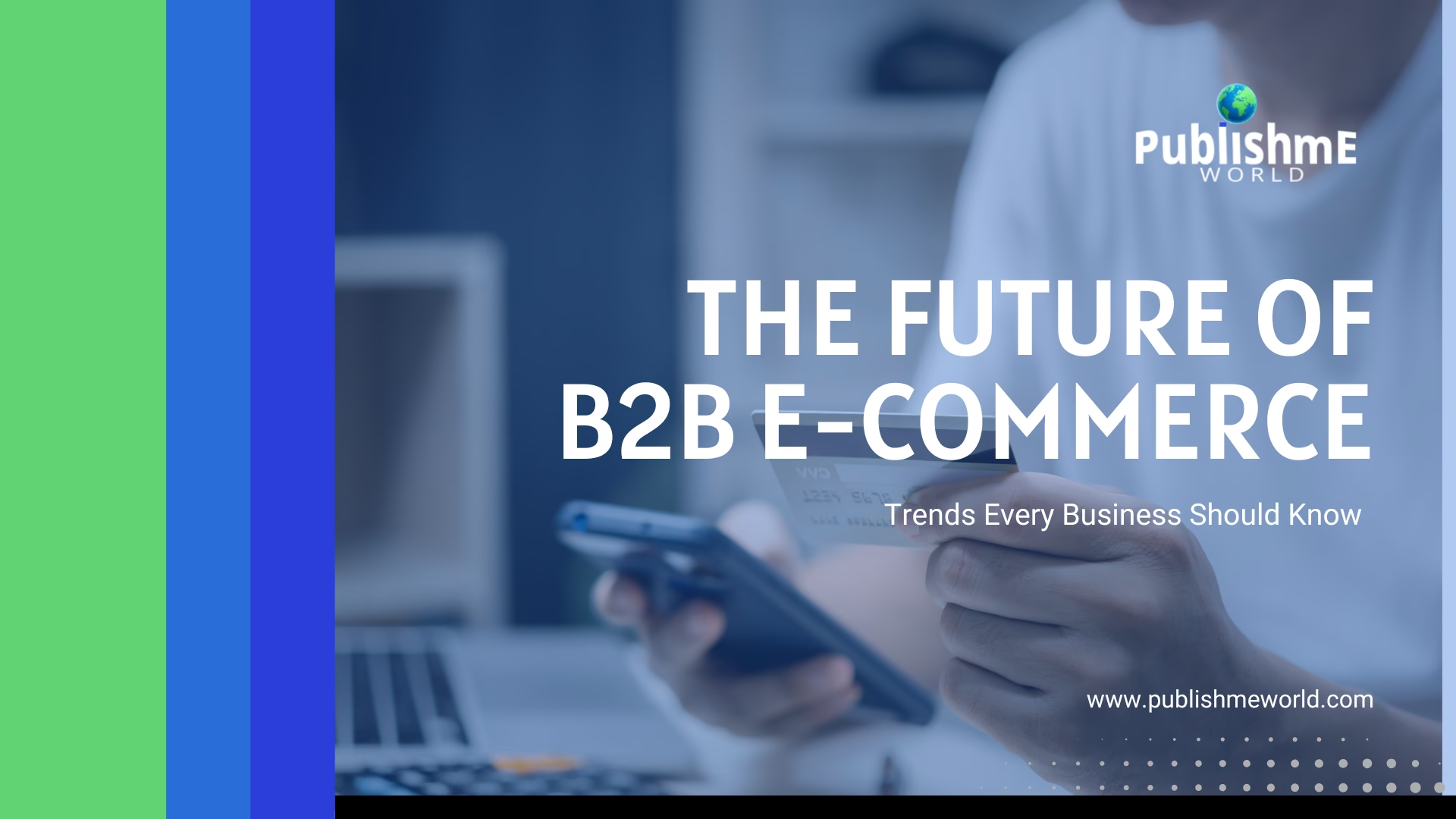Contents
Introduction
The B2B e-commerce world is undergoing a digital transformation like never before. With more businesses preferring online transactions over traditional methods, e-commerce is becoming smarter, faster, and more personalized. In 2025 and beyond, companies must stay ahead of the curve to thrive in an increasingly competitive market.
This blog explores key trends shaping the future of B2B e-commerce, highlighting the tools, technologies, and customer expectations that every business should prepare for.
Rise of Self-Service Portals
Autonomy and speed are what modern B2B buyers desire. They would rather place orders, check stock, compare prices, and access product information independently of sales representatives.
What’s in style?
- Self-service dashboards available around-the-clock
- Instant quotes and product specifications that can be downloaded
- Systems for digital tracking and reordering
Businesses will increase customer satisfaction and decrease sales cycle friction by investing in self-service platforms.
AI-Powered Personalization
Artificial intelligence is no longer a luxury – this has become a requirement. The AI buyer helps analyze behavior and distribute personal recommendations, prices and experiences.
How to increase AI :
Dynamic prices based on buyer type
Custom directory view for repeated customers
Chatbots provides human -like support
This level of privatization strengthens the buyer’s conditions and high conversion frequencies.+
Mobile-First B2B Experien
In 2025, more than 70% buyers are expected to use mobile devices to make decisions. A mobile-friendly platform is no longer optional-this is important.
What you need:
Responsive design
Easily navigate Mobile UX
Mobile -friendly box and payment
A poor mobile experience can lead to lost appointments, especially between decisions on general Z and Millennium.
Integration of AR/VR for Product Demos
Promotional reality (AR) and Virtual Reality (VR) switch in space, especially in industries such as production, motor vehicles and medical equipment.
Cases of use include:
Virtual product performance
3D model front view for customized order
External convenience tourism
This trend helps to reduce the requirement for physical meetings and make the journey more engrossing and efficient.
Subscription-Based B2B Models
Inspired by B2C giants such as Netflix and Amazon, sellers are seeking membership membership for recurring income.
B2B Member Examples:
Software-E-Service (mother-in-law)
Maintenance and supply distribution
Training and Counseling Services
Membership facilitates buyers and estimated cash flow for companies.
Omnichannel strategy to buy seamless
B2B buyers not only use a channel. They are researching LinkedIn, e -post providers, visiting websites and supporting all calls before buying.
Winning strategy in 2025:
Integrated Customer Data in Touch Points
Constant messages and prices
Integration of CRM, ERP and CMS equipment
Omnichannel forms the B2B confidence and shortens the sales cycle.
- Real -time list and prices
Buyers today expect accuracy like Amazon. Old warehouse or pricing errors can lead to lost trust and income.
Smart B2B system of:
Real -time availability
Dynamic discount and wholesaler prices
Demand forecasts that AI operates by AI
Real -time systems increase openness and help sales teams rapidly appointments.
- Increased cyber security and compliance
When the B2B-E trade is expanded, there are cyber threats. Companies should prioritize secure platforms that follow international compliance norms.
Large security measures:
Multifactor authentication (MFA)
GDPR and data on privacy compliance
Encrypted Payment Port
B2B buyers want their data and financial information safely.
9. Final Thoughts
The B2B e-commerce space is no longer trailing behind B2C. In fact, it’s leading the digital innovation race in many sectors. The future is digital, data-driven, and deeply personalized.This blog explores key trends shaping the future of B2B e-commerce, highlighting the tools, technologies, and customer expectations that every business should prepare for.
To stay competitive, B2B businesses must:
- Invest in scalable e-commerce platforms
- Embrace AI and automation
- Focus on customer experience across all channels
By doing so, they can turn their online stores into powerful engines of growth.





